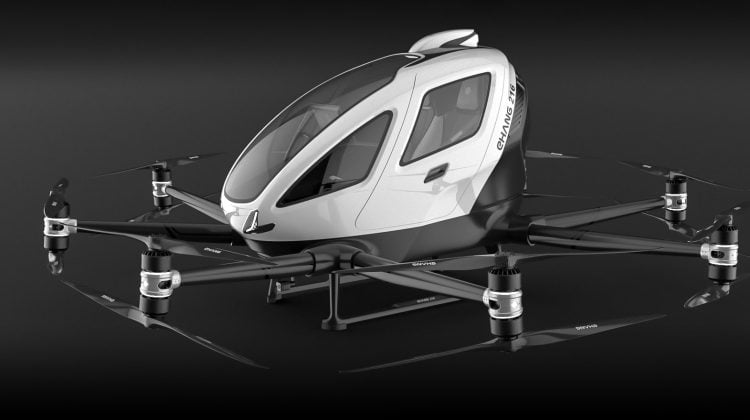
An EHang 216 Air Taxi. Image credit: EHang
An air taxi, also known as an eVTOL (electric vertical take-off and landing) aircraft, represents an innovative shift in modern transportation. It is a small commercial aircraft capable of making short flights on demand, essentially functioning as an aerial rideshare service. The concept of air taxis has been promoted for years, and with advancements in technology, we are now seeing this dream become a reality.
The Evolution of Air Taxis
In the early 2000s, the concept of air taxis gained traction in the United States with a study by NASA and the aerospace industry on the potential Small Aircraft Transportation System (SATS). This study aimed to promote air taxi operations in response to the rise of light-jet aircraft manufacturing. Fast forward to 2016, air taxis resurfaced as a key player in the burgeoning field of eVTOL, marking a significant leap in the evolution of transportation.
Air Taxi Regulations
Air taxi operations fall under certain regulations set by aviation authorities. In Canada, Transport Canada oversees air taxi operations under Canadian Aviation Regulation 703. The US Federal Aviation Regulations govern air taxi and air charter operations under 14 CFR Part 135 and 14 CFR part 298.
In recent years, China has also leveraged the potential of air taxis. In 2023, Ehang, a Chinese company, selected the Lleida-Alguaire Airport as its European urban air mobility center for unmanned eVTOLs, making it the world’s first airport to authorize the take-off and landing of unmanned eVTOLs.
The Air Taxi Experience
Air taxis offer a faster, cleaner, and smarter way to move people, providing a green alternative to driving that’s accessible via an app. From the user’s perspective, flying with an air taxi might feel more like getting into an SUV than boarding a plane. This new mode of transportation aims to deliver passengers to their destination significantly faster than traditional ground transportation, with a dramatically better experience.
Technological Advances in Air Taxis
Air taxis leverage several technological advances, most notably in the field of electric propulsion. NASA’s General Aviation Propulsion (GAP) program initiated in 1996 played a crucial role in advancing the U.S. light-aircraft industry. The GAP program aimed to help develop affordable propulsion systems, leading to the creation of the smallest commercial turbofan available at the time, the FJX-2 turbofan engine. This breakthrough marked a significant step forward in creating aircraft small enough to use local airports but sophisticated enough to meet commercial aircraft requirements.
Benefits of Air Taxis
Air taxis have the potential to bring numerous benefits, including:
- Decreased congestion in major airports and highways
- Greater flexibility in travel schedules
- Increased points of departure and arrival
- Lower operating costs for smaller airlines
- Potential economic boost by increasing tourism in areas not near major airports
Challenges Ahead for Air Taxis
While significant progress has been made, the path to widespread air taxi adoption is not without challenges. Initial costs of air taxis could be significantly higher than traditional air travel, potentially limiting its initial user base to business travelers and those to whom saving time is worth the extra expense. Safety is also a major concern, with manufacturers and regulators focusing on developing reliable and secure systems for these new aircraft.
The Future of Air Taxis
The future of air taxis is promising, with several companies, such as Joby Aviation and Overair, making significant strides in bringing this technology to the masses. Joby Aviation, for instance, aims to begin commercial passenger service by 2025, pending FAA certification. The company recently partnered with Delta Air Lines to offer a transformational, sustainable home-to-airport transportation service.
Similarly, Overair, in collaboration with the City of Arlington, plans to bring air taxis to the area within the next two and a half years. The ambitious plan includes flying between the city’s municipal airport, Entertainment District, and Dallas-Fort Worth International Airport.
Air Taxis Around the World
The concept of air taxis is not confined to the United States. Europe could see flying taxis taking off relatively soon, with French officials hoping to offer a small fleet of them for the Paris Olympics next summer. Similarly, in Asia, China is also investing heavily in air taxi technology, with companies like Ehang leading the charge.
Air taxis are small commercial aircraft designed to provide short-range air transportation on demand. While still in their early stages, the concept of air taxis has been gaining traction globally, promising a future where travel is faster, cleaner, and smarter. As the technology continues to evolve, the question is no longer “what is an air taxi?” but rather, “when will air taxis become a common mode of transportation?“